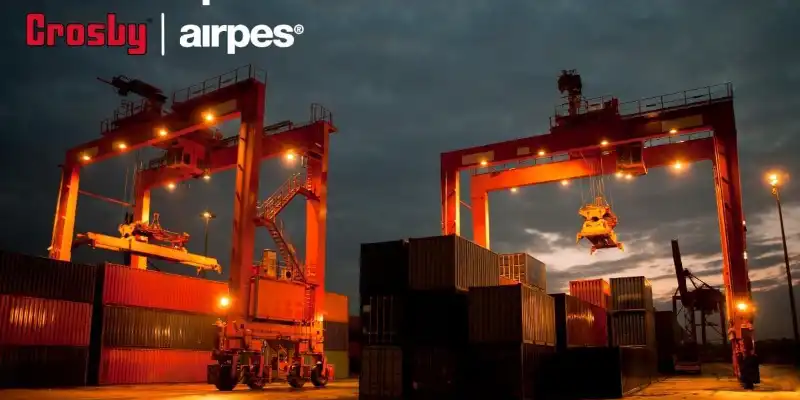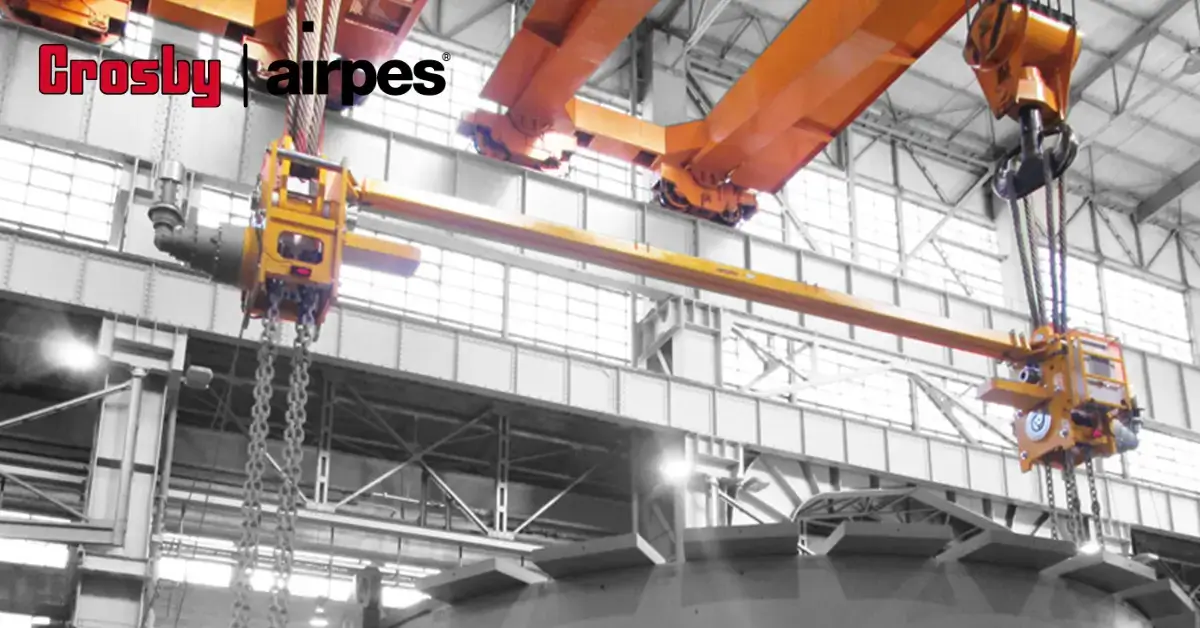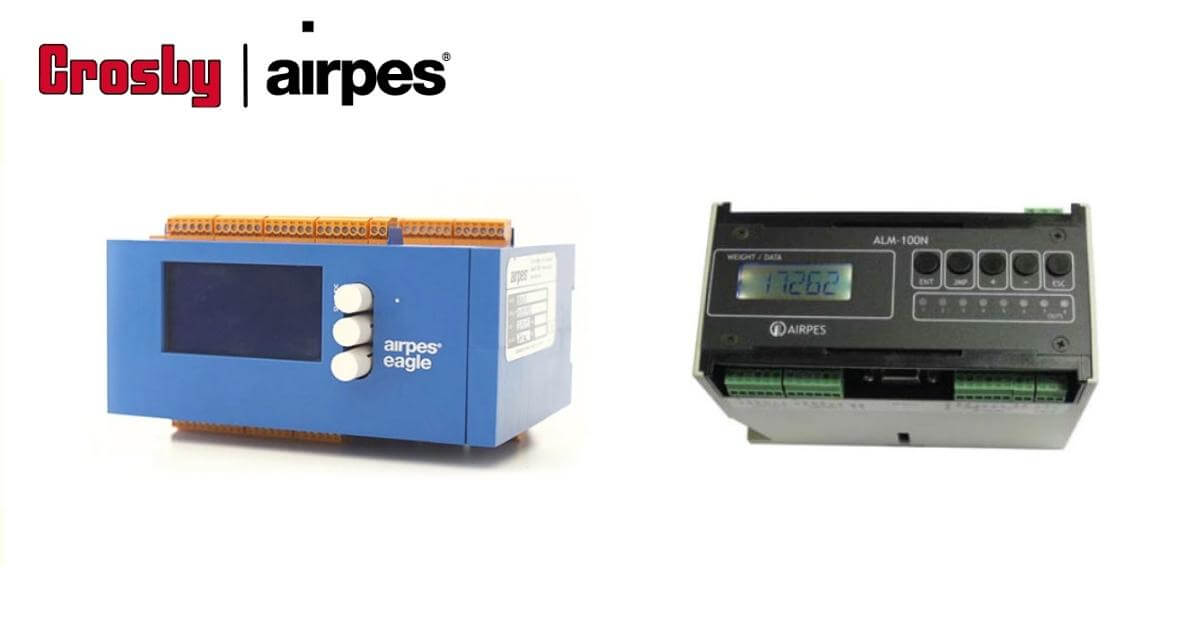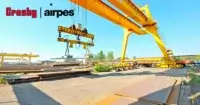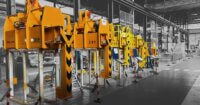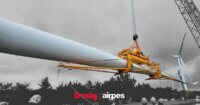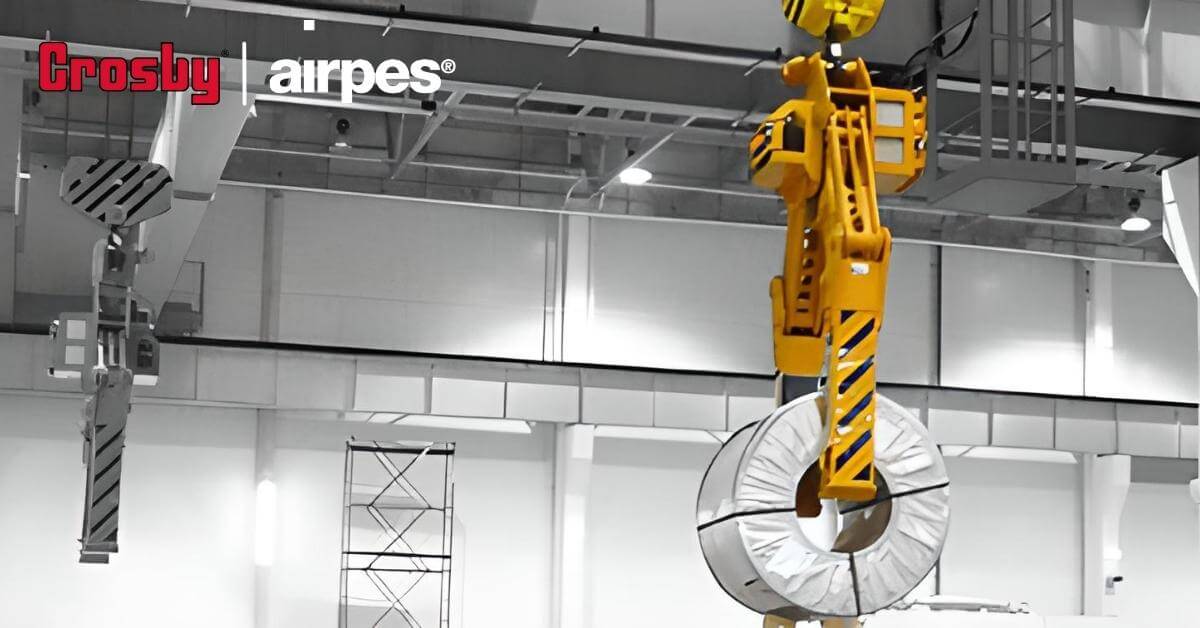
Below the hook solutions are practical and safe, both for materials that tend to flex and for loads where the weight has to be carefully distributed or suspended from several points.
A below-the-hook lifting device is a perfect solution for handling these materials when a load cannot be lifted safely with standard lifting equipment due to its size, shape, or center of gravity.
What is below the hook?
A below-the-hook lifting solution attaches the load to a hoist, which may contain hooks or attachment fittings. These devices are connected to a crane or lifting hook, allowing the load to be securely attached. They are primarily mechanical devices but can be controlled electronically, pneumatically, or hydraulically.
The most common reasons for using this type of device are:
- To increase worker efficiency
- To improve load securement
- To ensure worker safety
The time savings from improved efficiency not only covers but exceeds the cost of such a device. They will also save you money by preventing accidents that would otherwise have occurred without such a device. In addition to avoiding injury to your workers, below hook lifting devices prevent damage to the load too.
The most common loads that require an engineered lifting device are:
- Pipes or Bars
- Coils
- Drums
- Sheets and Plates
- Pallets
- Concrete Slabs
- Bundles and Rolls
Our best below-the-hook products
Lifting Beams
A lifting beam is one of the most valuable solutions if you know exactly which load you want to handle. Crosby Airpes’ lifting beams can adapt to every customer’s needs in capacity, available accessories hoists, design, and safety standards.
Crosby Airpes offers many types of lifting beam designs. Some are fixed beams, H beams, moveable center of gravity beams, hydraulic-powered beams, spreader beams with a leveling system, or motorized rotating beams.
Spreader Beams
Crosby Airpes spreader beams are the perfect solution if you need a lifting beam and don’t have a low headroom that limits the vertical movement of the crane. A spreader beam is in the same category as the classic lifting beams -it is very similar to a traditional lifting beam- but the rigging and the slings are situated at the ends of the beam. This makes that some of the vertical bending forces that occur on a lifting beam are transformed into horizontal compression forces through the beam.
This design allows the “spread” of the forces along the beam. That means a spreader beam can lift more weight and a heavier load than a classic lifting beam, even if both have the same size and sling and are built with the same material.
C-Hooks
Our C-hook is designed to meet every customer’s load configuration, weight, lifting area, and headroom requirements. It can be adapted to any existing crane of any industry.
Crosby Airpes can adapt the hoist of your overhead crane, gantry crane, single girder crane, or any lifting crane with a compelling crane hook. We study your case personally to deliver you customized and high-quality service.
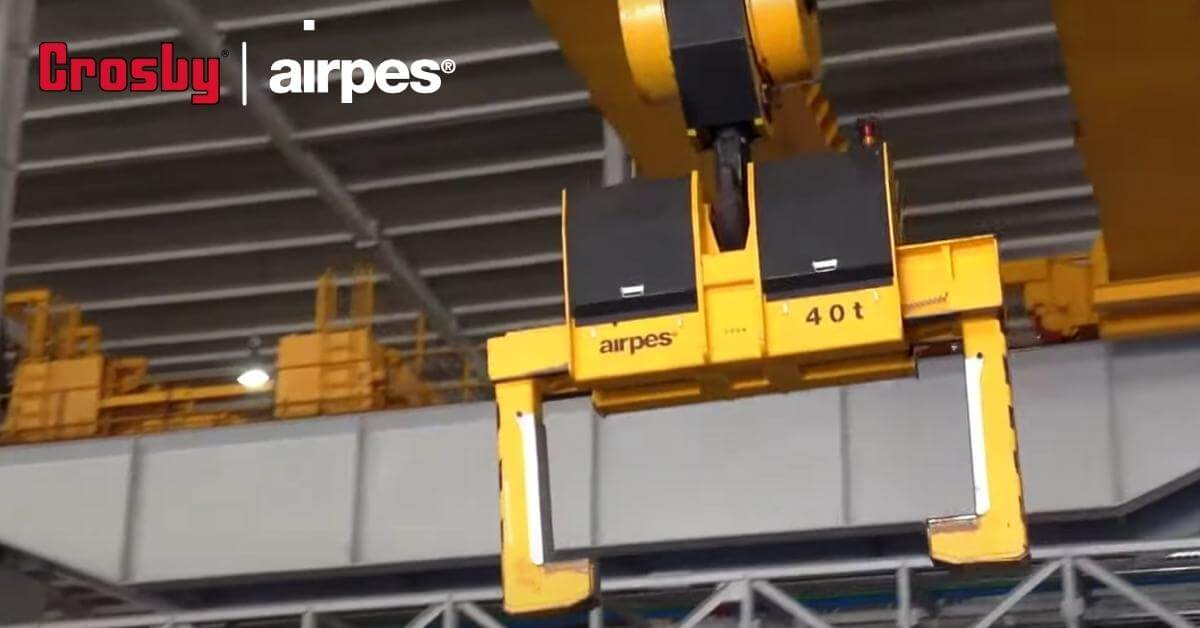
Lifting Tongs
Check out our vertical lifting tongs, designed by our engineers to meet every customer’s requests on mechanical features, electronic components, and the highest safety standards. Lifting tongs is one of the most demanded lifting applications in our portfolio.
Sheet Lifters
Our sheet lifter provides fast and smooth leg adjustment and allows additional force to apply to the sides of the loads. It adapts to any crane or existing hook to handle any material.
Crosby Airpes helps you load sheets of any size. Our plate lifter is a heavy-duty handling system ready to lift and handle your load safely and efficiently. It grabs a bundle of plates of any length easily.
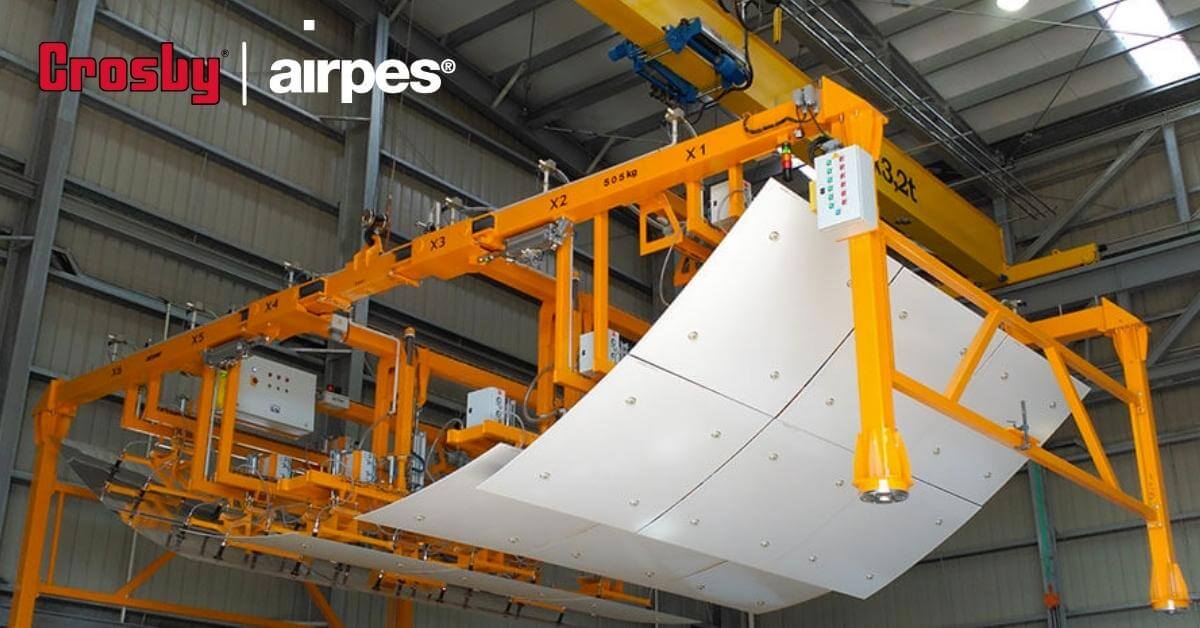
Electronic Limiters
Crosby Airpes’ electronic limiters monitor and record data concerning the various lifting and weighing systems. They gather information from different elements of the elevation process.
We have very economical electronic limiters, such as ALE-100, primarily designed to control the overload. Other are ALM-100N with overload control and other desired points. Our range of electronic limiters is complete with ALT-100, ALE-90, 100-ACN, and ACN-90.
Industrial Crane Remote Control
Crosby Airpes specializes in installing and adapting industrial radio control systems from the renowned manufacturer AUTEC to any crane or lifting system. AUTEC designs radio industrial remote controls and systems for overhead industrial cranes, lifting equipment, logistics, construction…
Improve your productivity, speed of movement, and machinery control by installing a wireless control system. We can install an AUTEC remote control system to a piece of new lifting equipment or adapt it to an existing overhead crane.
Below the hook device legislation
These devices must comply with applicable OSHA and ASME standards like any other lifting equipment.
- Section 5 of the Occupational Safety and Health Act establishes the General Duty clause, which states that in the absence of specific OSHA standards concerning a hazard, each employer ”shall provide each of its employees with employment and a workplace free of recognized risks that are causing or causing death or serious physical harm to its employees.” It means employers are responsible for protecting employees from recognized serious hazards.
- ASME B30.20: Below-the-hook lifting devices. This standard addresses mechanical and structural lifting devices, magnetic, vacuum, and hooks for waste and material handling. It provides guidelines for the marking, construction, installation, inspection, testing, maintenance, and operation of under-the-hook lifting devices.
The most important thing end users should do to ensure OSHA and ASME compliance is to check the identification label for correct information and legibility. The following information should appear below the hook-lift device identification labels:
- Manufacturer’s name(manufacturer’s website address is acceptable)
- Unique serial number
- Weight of the lifter if over 45 kg
- Rated load
- Cold Current Amps(if applicable)
- Voltage rating(if applicable)
- ASME BTH-1 Design Category
- ASME BTH-1 Service Class
Find your below the hook lifting solution at Crosby Airpes
At Crosby Airpes, we are specialists in below-the-hook equipment, and we offer you the best products and customized solutions so that you can carry out your work under the hook with maximum safety, following all current regulations and optimizing the way of working.
We can help you to find your below the hook system.

